The competitors of the race will have a great opportunity to discover the surrounding area. The race will pass through mountains of four inner regions of Gipuzkoa: Goierri, Urola, Debabarrena and Tolosaldea. As well as the two Natural Parks of Aralar and Aizkorri, these regions and villages offer a variety of opportunities from historic monuments to visitor centres.
Igartza Monumentu Multzoa
The Ehunmilak race starts in Beasain, where you will find various monuments from the Sixteenth Century: a palace, a mill, a wine-press and a foundry. These four newly renovated buildings are a must visit if you come to Beasain. The town centre has been extensively renovated in the last two years making the main street a nice place for a quiet stroll.
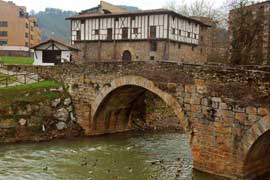
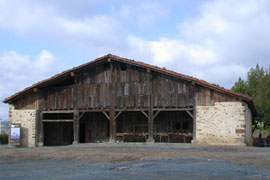
Caserio Igartubeiti
Following the Ehunmilak trail, on the right hand side of the road connecting Beasain and Ezkio, there is the Arriaran reservoir, further on the Kizkitza chapel in the territory of Ezkio. Although it is not very common in these regions, you will be able to see a lighthouse in the shrine of Kizkitza. Folklore has it that it was used to guide ships. Once you reach Ezkia, you must visit the Seventeenth Century farmhouse/museum of Igartubeiti, which preserves its wooden structure in very good condition and uses one of the beams for the winepress, making it one of the most interesting farmhouses in the Basque Country.
Ermita de La Antigua
From Ezkio you head towards the Izaspi Mountain. Once you have climbed to the top, you will descend to the town of Zumarraga. Before you reach the town, you will find the La Antigua chapel, known for its wooden vault. In Zumarraga, there are interesting buildings well worth a visit: the Town Hall, Plaza de Euskadi, the tower house of Miguel Lopez de Legazpi. Across a small river from Zumarraga is the town of Urretxu with several interesting religious buildings, San Martin Tours Church, Santa Barbara Chapel, once you leave the town behind, you climb towards Irimo, where there is the recently built Urretxuko Aterpetxea (Hostel of Urretxu) where one can spend the night.
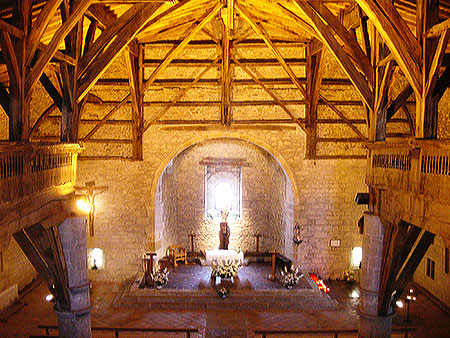
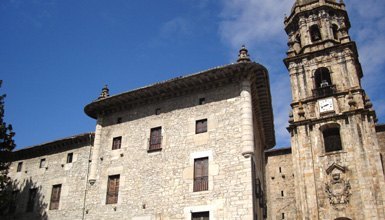
Parroquia de San Pedro
After climbing Irimo from Zumarraga, you enter the region of Bergara, where there is the Sixteenth Century Parish of San Pedro. Walking around, you will quickly recognise architecture from that era, displayed by the Arostegi and Arrese houses, the Errotalde palace, the Court house, Irizar palace, Olaso tower etc.
Torre Idiakez
After passing through the Elosua neighbourhood of Bergara you move into the region of Azkoitia. Although the race does not go through this town, it is worth a visit. In the town centre there is the “black house”, Idiakez tower.
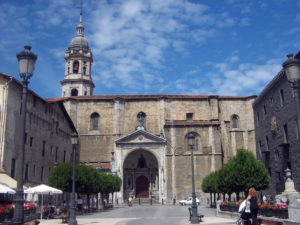
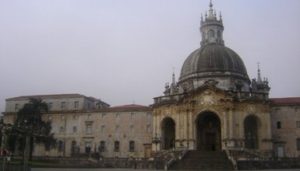
Santuario de Loiola
The race goes on from Elosua (Bergara) towards the Izarraitz mountain range, through the mountain pass of Azkarate (Azkoitia) and the Madariaga neighbourhood. The race does not go to the top of this mountain range but passes past the Izarraitz shelter, where one can always rest and recuperate. After that you will descend down to Azpeitia which is famous for the sanctuary of San Ignacio de Loyola that stands out significantly. If one enters the sanctuary, you will be pleasantly surprised by the towers built in the Fourteenth Century as well as the dome and arches. Leaving the sanctuary behind you, you can enjoy the old part of Azkotia and the Lasao Train Museum.
After a short stop in Azpeitia and replenishing your strength, the race climbs towards Tolosa. Before reaching Tolosa, there are various villages that link the Urola and Tolosaldea regions; Errezil, Bidania, Albiztur and others, these are villages where you´ll able to enjoy the tranquillity of the countryside that the big urban areas don´t offer.
The route then passes through some mountain trails and you will be able to get a glimpse of the aforementioned towns and villages. After passing the peak of Ernio, you will descend down to Tolosa, which was the capital of Gipuzkoa between 1844 and 1854. Although throughout its history it has been burned down several times, it still keeps the old part in good condition which consists of six parallel streets. Tolosa has recently been recognised for various markets and festivals such as the chorus competition, the international puppet festival, the red kidney bean markets (alubias), the “chuleta” and sweets.
Abaltzisketa Larraitz
It´s in Tolosa where the race has its largest aid station and resting area, where there is an important supply area, resting area, toilets and showers….. After recuperating you set off climbing. After greeting the giant of Alzo, you head towards Amezketa. Here, you will find yourself face to face with Txindoki, the most famous mountain in Gipuzkoa. Gather your strength in Amezketa and then climb up to Larraitz, a small neighbourhood in the shadow of Txindoki and one of the entrances to the Aralar Natural Park. Here, there is the Txindokiko Itzala (Txindoki Shadow) Tree Park Adventure Park where you can do many different activities. You leave the area of Larraitz behind you and enter the Aralar National Park Mountain Range. Here there are large meadows, grazing places for animals from the surrounding area. The most important mountains to be found in Aralar are the following; Txindoki, Ganbo, Balerdi, Hirumugarrieta y Putterri.
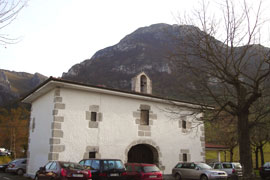
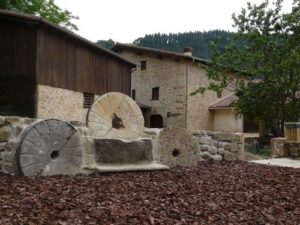
Museo Joxe Miel Barandiaran
Leaving the green meadows behind you, one enters the Aralar Natural Park forest. On the way you will pass the Lareo reservoir. Down the road, there is Lizarrusti, which belongs to the municipality of Ataun, the longest village of Gipuzkoa and well known for being the birthplace of the famous priest, anthropologist, ethnologist and archaeologist On Joxe Miel Barandiaran, who left a great legacy on the history of the Basque Country, famous for creating a list of megalithic constructions found in Aralar and for his work spreading the Basque mythology. A museum displaying his work and life has recently been opened.
Centro de interpretación de Aralar
The Lizarrusti visitors centre is the junction of Aralar and Aizkorri parks. This building has different purposes; as an overnight shelter open to both groups and individuals, it also has a bar and restaurant. It has parking, a fountain, a playground and a rest area for anyone wanting to enjoy the surrounding mountains.
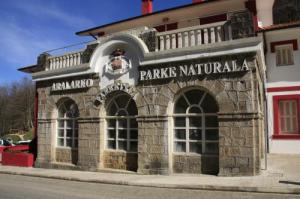
Also located here is the Aralar Visitors Centre. In it, the natural and cultural resources and their managements are exhibited. The main aim of the centre is to understand the natural resources with respect to nature, recognising different habitats or ecosystems and evaluate their condition.
From Lizarrusti you head towards Etxegarate through large oak forests. Etxegarate is one of the most important settlements between Gipuzkoa and Navarra, close to the village of Idiazabal. This village has become well known for the origin of Basque cheese, made with latxa, ewe’s milk that graze in the mountains of the Basque Country. There is a museum dedicated to shepherding in the village centre
Leaving the mountain behind you, you can descend to Zegama. In the Andueza farmhouse, there is the Aizkorri-Aralar Natural Park Visitors Centre, which is also a Museum of Wood and Zegama´s tourism office. However the town of Zegama, for those who are into the world of mountain racing, is best known for the world famous Zegama-Aizkorri marathon.
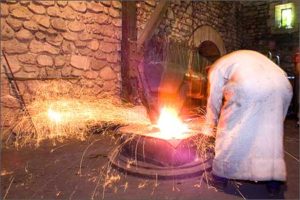
Mirandaola
The surrounding countryside that extends from the Aizkorri to Legazpi was very rich with iron ore and the people of Legazpi have always been closely linked to this precious mineral. Evidence of this is the different mines and foundries that can be found in this valley and The Iron Visitors Centre is located in Mirandaola.
The village of Zerain, the Iron Mountain, hides interesting mining traces: the underground galleries of the Aizpea mines, the old railroad tracks … all this can be seen in the centre of Aizpitta. Runners will descend from Zerain to Mutiloa and run along the old train tracks that were used in the Aizpea mines to reach Ormaiztegi.
The most important building in Ormaiztegi is the iron bridge that passes over the village, which measures 289 metres and weighs 18,000 tons. This is an exemplary work done by the engineer Alexander Lavalley, prior to the Eiffel Tower. The village is famous for being the birthplace of the Carlist general Tomas Zumalakarregi and there is a museum dedicated to him.
After running through the four inner regions of Gipuzkoa, you will finally arrive back to Beasain. Here you leave the mountain paths behind you and descend into the streets and with this it is the end of the tour around the Ehunmilak course.
If you require any further information, you can go to the tourism offices or web-sites of the regions.

